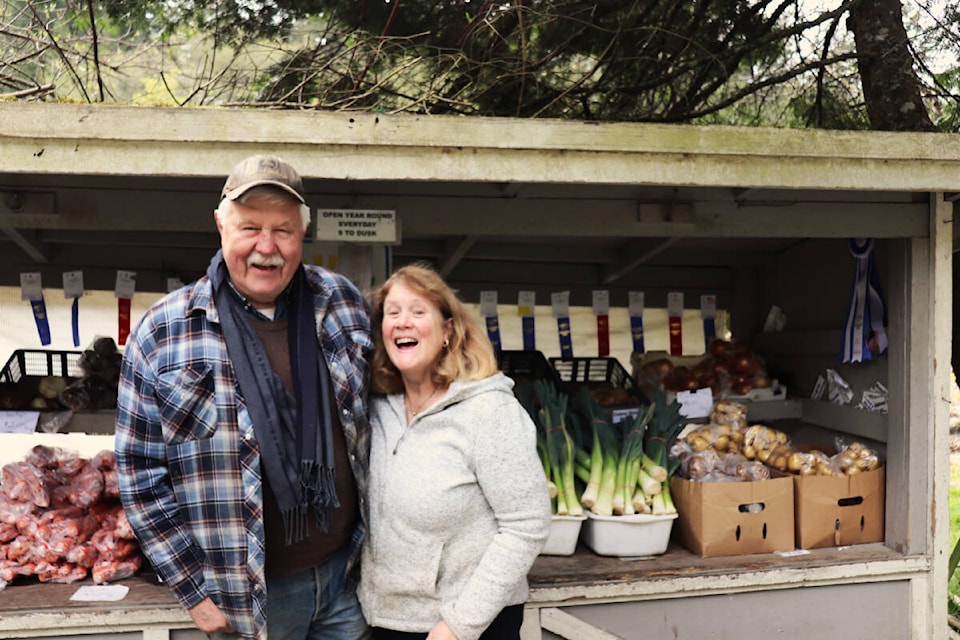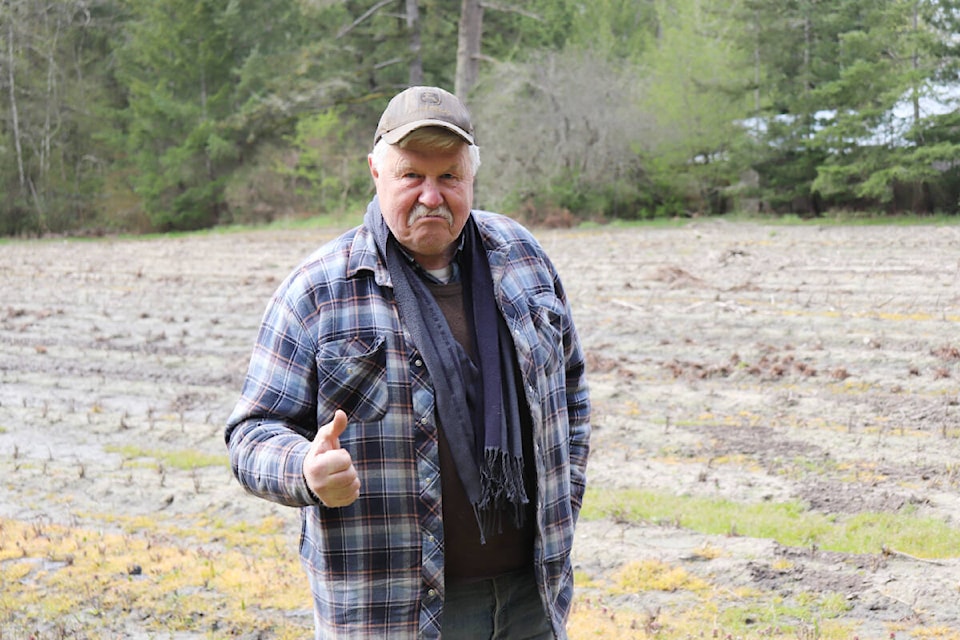By Tim Collins
Contributor
Robin Herlinveaux was not always a farmer.
The 72-year-old southern Vancouver Island resident didn’t even hail from a farming family and, as a young man, had little inclination to make his living from the land.
“I’d worked about a million jobs but in about 1973, my father thought we’d give farming a try. He’s long gone now, but I’ve been doing this for about 45 years now and I still like it,” Herlinveaux said.
“We went from raising sheep to selling hay to growing vegetables and I still love doing it.”
But Herlinveaux is quick to dispel any romantic notion about farming being a lifestyle or “way of life” – at least for him.
“There’s nothing romantic about it. This is a business, plain and simple. It’s how we make a living. But things have changed and gotten harder over the years. That’s for sure,” Herlinveaux said.
The statistics confirm that assessment.
According to the Capital Region Food and Agricultural Initiatives Roundtable, Vancouver Island produced as much as 85 per cent of the Island’s food supply in the 1950s. That number has plummeted to about six per cent today, according to Herlinveaux, and the situation shows no signs of improving.
One of the most significant obstacles for Herlinveaux and other farmers in the region is rooted in the value and associated cost of land on the South Island.
The value of land has skyrocketed in recent years and, according to Jodie MacLennan, the Island deputy assessor, those values rose by up to 35 per cent in 2022 alone.
“We can’t afford to buy the land, so we have to rent it, but the landowners don’t want to rent to farmers,” Herlinveaux said.
“There are a lot of places where people have made so much money in the appreciation of their property over the last three, four, five years they don’t need farmers on there anymore. And they aren’t concerned that we all need food … that don’t mean anything to these people. They can go to the store and buy their food, so that’s all they care about.”
But, according to Herlinveaux, the lack of interest in farming doesn’t translate into a lack of interest in money.
“These same people who won’t rent their land to farmers will still do things to qualify themselves for a farming tax credit on their tax bill,” said Herlinveaux. “It’s just wrong.”
“They’re token farmers. They do the bare minimum and then sit around patting each other on the back and laughing about how they saved $7,000 on their taxes.”
“(For example) they won’t fertilize their land, but they’ll ‘mine’ it year after year for a hay crop that they have someone take off for them and they get the same credit that I do for actually farming. On the Saanich Peninsula alone, there are probably about 3,000 acres of farmland that aren’t even fertilized.”
That observation was backed up by another farmer, who wished to withhold his name for fear of negative reactions from neighbours.
“I have an apple orchard with 75 acres and it’s a lot of work. But the people across the road have someone bring in a couple of sheep for a few weeks and laugh about how they get the same tax credit on their land,” he said.
Regulations governing food production are also an impediment.
“If you want to sell carrots, you have to build a washing plant, get your Food Safe, meet regulations on water testing and have calibrated weigh scales. By the time you’re done it’s cost you a quarter-million just to sell a bag of carrots.”
The net result of these issues leads Herlinveaux to the conclusion that there won’t be a legacy of farming to pass on to future generations. He has four children and only one of them has chosen to do any farming.
“There won’t be any succession. How in the hell are young farmers going to buy a place with land prices going up driven by speculators and big corporations? This little piece of land here would sell for more than four million.
“At best you might see some hobby farmers out here soon,” he said.
Asked if he had any suggestions for improving the situation, Herlinveaux said that the tax regulations that reward people who aren’t actually farming should be addressed and that benefits should only go to legitimate farmers.

But despite the gloomy situation facing farmers, Herlinveaux and his wife, Maureen, have persisted. He’s continued to farm several parcels of land and sells some of his produce through established retail outlets, like Red Barn Market.
“We also have the roadside stand (on Tatlow Road) and we go to the farmer’s market at the Saanich Fairgrounds every week. That helps to advertise our stand here as well,” Herlinveaux said.
“Despite the problems, it’s a business that I’ve done for 45 years, and I still love it.”
